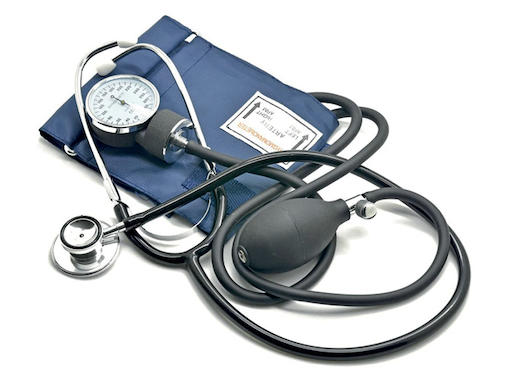Get to Know your Medical Kit – Part 2 : Diagnostics
An important element of a patient assessment is providing a report summary and measuring vital signs diagnostics.
The Ships Medical Guide (23rd edition), inside front cover, has an assessment document known as ATMIST to prepare a report:
A – Age & Name of patient
T – Time of incident
M – Mechanism of Injury/Illness
I - Injuries found/illness symptoms
S – Signs – Resp rate, Pulse rate, SpO2, Blood pressure, Pupils
T – Treatment Given
Medical kits should have a number of diagnostic devices to measure vital signs as required for the ATMIST report.
Blood pressure cuff & stethoscope – to measure blood pressure & pulse.
• A manual sphygmomanometer is the most reliable for accurate results.
• Automatic BP monitors are very easy to use but not always as accurate as a manual option, so it’s advised a BP measurement is taken 2-3 times with an auto option to double check accuracy
Thermometer – types
• Digital – oral or more commonly under armpit
• Tympanic – inserted into the ear
• Infrared – scanning either forehead or body options
Finger Oximeter – SpO2 oxygen concentration & pulse
• Measurements of 92-100% are normal readings. In the low 90’s and less, represents a red flag and potential respiratory issue. Also measures pulse.
Otoscope with blue/white light option
• To measure pupil dilation and eye cornea damage as well as checking in ears and throat
Blood glucose monitor
• To measure blood sugar levels and monitor diabetics
Some specialised blood glucose monitors can be used to also measure Ketones & Hematocrit. Ketones are chemicals made in your liver. They are produced when you don’t have enough of the hormone insulin in your body to turn sugar (or glucose) into energy. You need another source, so your body uses fat instead. Your muscle and other tissues can then use them for fuel. The ability to measure ketones helps in making. For a person without diabetes, this process doesn’t become an issue. But when you have diabetes, things can run out of control, and you build up too many ketones in your blood. If the level goes too high, it can become life threatening. Tests can show you when your level gets high so you can treat it before you get sick.
A hematocrit is a simple blood test done to measure the red blood cells in a person’s blood. Red blood cells (erythrocytes) are important because they carry oxygen through your body. A low or high red blood cell count can indicate a medical condition or disease.
Urine Testing Sticks
• A urine test strip or dipstick is a basic diagnostic tool use to determine pathological changes in a patient’s urine in standard urinalysis. A dipstick test can check for: Acidity, or pH. If the acide is abnormal, you could have kidney stones, a urinary tract infection (UTI0, or another condition.
EKG
• An electrocardiogram tool is a simple procedure that measures electrical signals in your heart. Each time you heart beats, an electrical signal travels through the heart. An EKG can show if you heart is beating at a normal rate and strength. Measurements can be taken with 3-lead or 12-leads (the 12 lead provides more information on the diagnosis of your cardiac arrhythmia).
• EKG monitors are nor normally found in medical kits and so an additional item in particular if there is an advanced sick bay or hospital on board.
Telemedicine monitors such are the MSOS Themis TCP provide the ability to measure all of the above vital signs simultaneously and transmit in real-time to Doctors to help make critical medical diagnoses.
If you have any further questions about our medical kits, you can contact us here!







